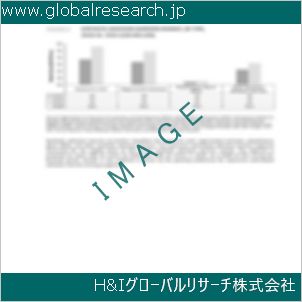1 Taste Modifying Agents Market Overview
1.1 Product Overview and Scope of Taste Modifying Agents
1.2 Taste Modifying Agents Segment by Type
1.2.1 Global Taste Modifying Agents Market Value Comparison by Type (2023-2029)
1.2.2 Salt Modulators
1.2.3 Sweet Modulators
1.3 Taste Modifying Agents Segment by Application
1.3.1 Global Taste Modifying Agents Market Value by Application: (2023-2029)
1.3.2 Baked Goods
1.3.3 Snack Food
1.3.4 Others
1.4 Global Taste Modifying Agents Market Size Estimates and Forecasts
1.4.1 Global Taste Modifying Agents Revenue 2018-2029
1.4.2 Global Taste Modifying Agents Sales 2018-2029
1.4.3 Global Taste Modifying Agents Market Average Price (2018-2029)
1.5 Assumptions and Limitations
2 Taste Modifying Agents Market Competition by Manufacturers
2.1 Global Taste Modifying Agents Sales Market Share by Manufacturers (2018-2023)
2.2 Global Taste Modifying Agents Revenue Market Share by Manufacturers (2018-2023)
2.3 Global Taste Modifying Agents Average Price by Manufacturers (2018-2023)
2.4 Global Taste Modifying Agents Industry Ranking 2021 VS 2022 VS 2023
2.5 Global Key Manufacturers of Taste Modifying Agents, Manufacturing Sites & Headquarters
2.6 Global Key Manufacturers of Taste Modifying Agents, Product Type & Application
2.7 Taste Modifying Agents Market Competitive Situation and Trends
2.7.1 Taste Modifying Agents Market Concentration Rate
2.7.2 The Global Top 5 and Top 10 Largest Taste Modifying Agents Players Market Share by Revenue
2.7.3 Global Taste Modifying Agents Market Share by Company Type (Tier 1, Tier 2 and Tier 3)
2.8 Manufacturers Mergers & Acquisitions, Expansion Plans
3 Taste Modifying Agents Retrospective Market Scenario by Region
3.1 Global Taste Modifying Agents Market Size by Region: 2018 Versus 2022 Versus 2029
3.2 Global Taste Modifying Agents Global Taste Modifying Agents Sales by Region: 2018-2029
3.2.1 Global Taste Modifying Agents Sales by Region: 2018-2023
3.2.2 Global Taste Modifying Agents Sales by Region: 2024-2029
3.3 Global Taste Modifying Agents Global Taste Modifying Agents Revenue by Region: 2018-2029
3.3.1 Global Taste Modifying Agents Revenue by Region: 2018-2023
3.3.2 Global Taste Modifying Agents Revenue by Region: 2024-2029
3.4 North America Taste Modifying Agents Market Facts & Figures by Country
3.4.1 North America Taste Modifying Agents Market Size by Country: 2018 VS 2022 VS 2029
3.4.2 North America Taste Modifying Agents Sales by Country (2018-2029)
3.4.3 North America Taste Modifying Agents Revenue by Country (2018-2029)
3.4.4 United States
3.4.5 Canada
3.5 Europe Taste Modifying Agents Market Facts & Figures by Country
3.5.1 Europe Taste Modifying Agents Market Size by Country: 2018 VS 2022 VS 2029
3.5.2 Europe Taste Modifying Agents Sales by Country (2018-2029)
3.5.3 Europe Taste Modifying Agents Revenue by Country (2018-2029)
3.5.4 Germany
3.5.5 France
3.5.6 U.K.
3.5.7 Italy
3.5.8 Russia
3.6 Asia Pacific Taste Modifying Agents Market Facts & Figures by Country
3.6.1 Asia Pacific Taste Modifying Agents Market Size by Country: 2018 VS 2022 VS 2029
3.6.2 Asia Pacific Taste Modifying Agents Sales by Country (2018-2029)
3.6.3 Asia Pacific Taste Modifying Agents Revenue by Country (2018-2029)
3.6.4 China
3.6.5 Japan
3.6.6 South Korea
3.6.7 India
3.6.8 Australia
3.6.9 China Taiwan
3.6.10 Indonesia
3.6.11 Thailand
3.6.12 Malaysia
3.7 Latin America Taste Modifying Agents Market Facts & Figures by Country
3.7.1 Latin America Taste Modifying Agents Market Size by Country: 2018 VS 2022 VS 2029
3.7.2 Latin America Taste Modifying Agents Sales by Country (2018-2029)
3.7.3 Latin America Taste Modifying Agents Revenue by Country (2018-2029)
3.7.4 Mexico
3.7.5 Brazil
3.7.6 Argentina
3.8 Middle East and Africa Taste Modifying Agents Market Facts & Figures by Country
3.8.1 Middle East and Africa Taste Modifying Agents Market Size by Country: 2018 VS 2022 VS 2029
3.8.2 Middle East and Africa Taste Modifying Agents Sales by Country (2018-2029)
3.8.3 Middle East and Africa Taste Modifying Agents Revenue by Country (2018-2029)
3.8.4 Turkey
3.8.5 Saudi Arabia
3.8.6 UAE
4 Segment by Type
4.1 Global Taste Modifying Agents Sales by Type (2018-2029)
4.1.1 Global Taste Modifying Agents Sales by Type (2018-2023)
4.1.2 Global Taste Modifying Agents Sales by Type (2024-2029)
4.1.3 Global Taste Modifying Agents Sales Market Share by Type (2018-2029)
4.2 Global Taste Modifying Agents Revenue by Type (2018-2029)
4.2.1 Global Taste Modifying Agents Revenue by Type (2018-2023)
4.2.2 Global Taste Modifying Agents Revenue by Type (2024-2029)
4.2.3 Global Taste Modifying Agents Revenue Market Share by Type (2018-2029)
4.3 Global Taste Modifying Agents Price by Type (2018-2029)
5 Segment by Application
5.1 Global Taste Modifying Agents Sales by Application (2018-2029)
5.1.1 Global Taste Modifying Agents Sales by Application (2018-2023)
5.1.2 Global Taste Modifying Agents Sales by Application (2024-2029)
5.1.3 Global Taste Modifying Agents Sales Market Share by Application (2018-2029)
5.2 Global Taste Modifying Agents Revenue by Application (2018-2029)
5.2.1 Global Taste Modifying Agents Revenue by Application (2018-2023)
5.2.2 Global Taste Modifying Agents Revenue by Application (2024-2029)
5.2.3 Global Taste Modifying Agents Revenue Market Share by Application (2018-2029)
5.3 Global Taste Modifying Agents Price by Application (2018-2029)
6 Key Companies Profiled
6.1 Firmenich SA
6.1.1 Firmenich SA Corporation Information
6.1.2 Firmenich SA Description and Business Overview
6.1.3 Firmenich SA Taste Modifying Agents Sales, Revenue and Gross Margin (2018-2023)
6.1.4 Firmenich SA Taste Modifying Agents Product Portfolio
6.1.5 Firmenich SA Recent Developments/Updates
6.2 Givaudan SA
6.2.1 Givaudan SA Corporation Information
6.2.2 Givaudan SA Description and Business Overview
6.2.3 Givaudan SA Taste Modifying Agents Sales, Revenue and Gross Margin (2018-2023)
6.2.4 Givaudan SA Taste Modifying Agents Product Portfolio
6.2.5 Givaudan SA Recent Developments/Updates
6.3 DSM
6.3.1 DSM Corporation Information
6.3.2 DSM Description and Business Overview
6.3.3 DSM Taste Modifying Agents Sales, Revenue and Gross Margin (2018-2023)
6.3.4 DSM Taste Modifying Agents Product Portfolio
6.3.5 DSM Recent Developments/Updates
6.4 Kerry Ingredion
6.4.1 Kerry Ingredion Corporation Information
6.4.2 Kerry Ingredion Description and Business Overview
6.4.3 Kerry Ingredion Taste Modifying Agents Sales, Revenue and Gross Margin (2018-2023)
6.4.4 Kerry Ingredion Taste Modifying Agents Product Portfolio
6.4.5 Kerry Ingredion Recent Developments/Updates
6.5 International Flavors & Fragrances
6.5.1 International Flavors & Fragrances Corporation Information
6.5.2 International Flavors & Fragrances Description and Business Overview
6.5.3 International Flavors & Fragrances Taste Modifying Agents Sales, Revenue and Gross Margin (2018-2023)
6.5.4 International Flavors & Fragrances Taste Modifying Agents Product Portfolio
6.5.5 International Flavors & Fragrances Recent Developments/Updates
6.6 The Flavor Factory
6.6.1 The Flavor Factory Corporation Information
6.6.2 The Flavor Factory Description and Business Overview
6.6.3 The Flavor Factory Taste Modifying Agents Sales, Revenue and Gross Margin (2018-2023)
6.6.4 The Flavor Factory Taste Modifying Agents Product Portfolio
6.6.5 The Flavor Factory Recent Developments/Updates
6.7 Symrise
6.6.1 Symrise Corporation Information
6.6.2 Symrise Description and Business Overview
6.6.3 Symrise Taste Modifying Agents Sales, Revenue and Gross Margin (2018-2023)
6.4.4 Symrise Taste Modifying Agents Product Portfolio
6.7.5 Symrise Recent Developments/Updates
6.8 Sensient Technologies
6.8.1 Sensient Technologies Corporation Information
6.8.2 Sensient Technologies Description and Business Overview
6.8.3 Sensient Technologies Taste Modifying Agents Sales, Revenue and Gross Margin (2018-2023)
6.8.4 Sensient Technologies Taste Modifying Agents Product Portfolio
6.8.5 Sensient Technologies Recent Developments/Updates
6.9 Carmi Flavor & Fragrance
6.9.1 Carmi Flavor & Fragrance Corporation Information
6.9.2 Carmi Flavor & Fragrance Description and Business Overview
6.9.3 Carmi Flavor & Fragrance Taste Modifying Agents Sales, Revenue and Gross Margin (2018-2023)
6.9.4 Carmi Flavor & Fragrance Taste Modifying Agents Product Portfolio
6.9.5 Carmi Flavor & Fragrance Recent Developments/Updates
6.10 Flavorchem Corporation
6.10.1 Flavorchem Corporation Corporation Information
6.10.2 Flavorchem Corporation Description and Business Overview
6.10.3 Flavorchem Corporation Taste Modifying Agents Sales, Revenue and Gross Margin (2018-2023)
6.10.4 Flavorchem Corporation Taste Modifying Agents Product Portfolio
6.10.5 Flavorchem Corporation Recent Developments/Updates
6.11 Senomyx
6.11.1 Senomyx Corporation Information
6.11.2 Senomyx Taste Modifying Agents Description and Business Overview
6.11.3 Senomyx Taste Modifying Agents Sales, Revenue and Gross Margin (2018-2023)
6.11.4 Senomyx Taste Modifying Agents Product Portfolio
6.11.5 Senomyx Recent Developments/Updates
7 Industry Chain and Sales Channels Analysis
7.1 Taste Modifying Agents Industry Chain Analysis
7.2 Taste Modifying Agents Key Raw Materials
7.2.1 Key Raw Materials
7.2.2 Raw Materials Key Suppliers
7.3 Taste Modifying Agents Production Mode & Process
7.4 Taste Modifying Agents Sales and Marketing
7.4.1 Taste Modifying Agents Sales Channels
7.4.2 Taste Modifying Agents Distributors
7.5 Taste Modifying Agents Customers
8 Taste Modifying Agents Market Dynamics
8.1 Taste Modifying Agents Industry Trends
8.2 Taste Modifying Agents Market Drivers
8.3 Taste Modifying Agents Market Challenges
8.4 Taste Modifying Agents Market Restraints
9 Research Finding and Conclusion
10 Methodology and Data Source
10.1 Methodology/Research Approach
10.1.1 Research Programs/Design
10.1.2 Market Size Estimation
10.1.3 Market Breakdown and Data Triangulation
10.2 Data Source
10.2.1 Secondary Sources
10.2.2 Primary Sources
10.3 Author List
10.4 Disclaimer
| ※参考情報 味覚調整剤は、食品の味や風味を調整するために使用される添加物の一種です。これらの剤は、食品の味のバランスを取り、風味を引き立てたり、飲食体験を向上させたりする役割を果たします。味覚調整剤は、特に食品業界において重要な役割を持ち、消費者が求める味覚を実現するために欠かせない技術となっています。 まず、味覚調整剤の定義について考えてみましょう。味覚調整剤とは、食材や料理の風味を改善・調整する物質を指します。これは、自然由来の成分や合成化合物として存在し、甘み、酸味、苦味、塩味、うま味などの味覚を調整することができます。味覚調整剤は、通常、食品に添加されることでその効果を発揮します。 味覚調整剤の特徴には、主に以下の点が挙げられます。第一に、風味の強化や調整が可能なことです。これにより、味覚のバランスをとったり、特定の風味を引き出すことができます。第二に、特定の味覚を隠す効果があります。例えば、苦味を抑えたり、酸味を和らげたりすることで、より飲みやすい食品を作ることができます。第三に、カロリーを抑えつつも満足感を得られる味覚を実現できる点です。このため、健康志向の高い消費者にも対応することが可能です。 味覚調整剤の種類には、複数のカテゴリーがあります。代表的なものとして、甘味料、酸味料、うま味料が挙げられます。甘味料は、糖類や人工甘味料を含み、食品に甘みを付与します。例えば、アスパルテームやスクロースなどは、広く使用されている人工甘味料です。酸味料は、レモン酸や酢酸などが含まれ、食品に酸味を加えることができます。うま味料は、グルタミン酸ナトリウム(MSG)などが有名で、肉や魚の旨味を引き立てる効果があります。 用途について考えると、味覚調整剤は多岐にわたる分野で利用されています。特に、飲料、菓子類、加工食品、調味料、レトルト食品などで広く使われています。例えば、清涼飲料水には甘味料が、スナックやデザートには香料やうま味料が使われ、消費者が求める味覚を実現しています。また、健康食品やダイエット食品においても、カロリーを抑えつつ美味しさを維持するために味覚調整剤が活用されています。 関連技術としては、食品分析技術や味覚の科学が挙げられます。これらの技術は、食品中における成分の定量や味覚の評価を行うために重要です。例えば、味覚センサーを用いて食品の風味を正確に測定し、最適な味覚調整剤の配合を決定することができます。また、分子調理の技術も、味覚調整のひとつの方法として注目されています。分子調理技術を使用することで、従来の調理法では得られなかった新しい風味を創出することが可能になります。 さらに、味覚調整剤は、消費者の嗜好や健康志向の変化に応じて進化しています。近年では、自然由来の成分を使用した「クリーンラベル」製品の需要が増加しています。これは、消費者が健康や環境意識を高める中で、より自然で安全な食品を選好する傾向を反映しています。このため、業界では自然由来の味覚調整剤の研究開発が進められています。また、人工甘味料の健康への影響に関する議論が続く中で、より安全で効果的な代替品の探索も進んでいます。 最後に、味覚調整剤の使用にはいくつかの課題も存在しています。例えば、特定の味覚調整剤が持つアレルギーのリスクや、過剰摂取による健康への影響が指摘されています。食品メーカーは、これらのリスクを考慮しながら、安全で効率的な使用法を確立する必要があります。また、消費者教育も重要であり、味覚調整剤の理解を深めることで、適切な選択ができるよう支援することが求められます。 味覚調整剤は、食品の魅力を高め、消費者の多様なニーズに応える重要な要素です。今後の食品業界において、味覚調整剤のさらなる研究と開発が進むことで、より健康的で美味しい食品が提供されることが期待されます。その根底には、味覚の科学や技術の進化と、消費者志向の変化が大きく関わっています。食品業界は、この流れを捉え、革新的な味覚体験を生み出すことが求められています。 |
❖ 免責事項 ❖
http://www.globalresearch.jp/disclaimer












